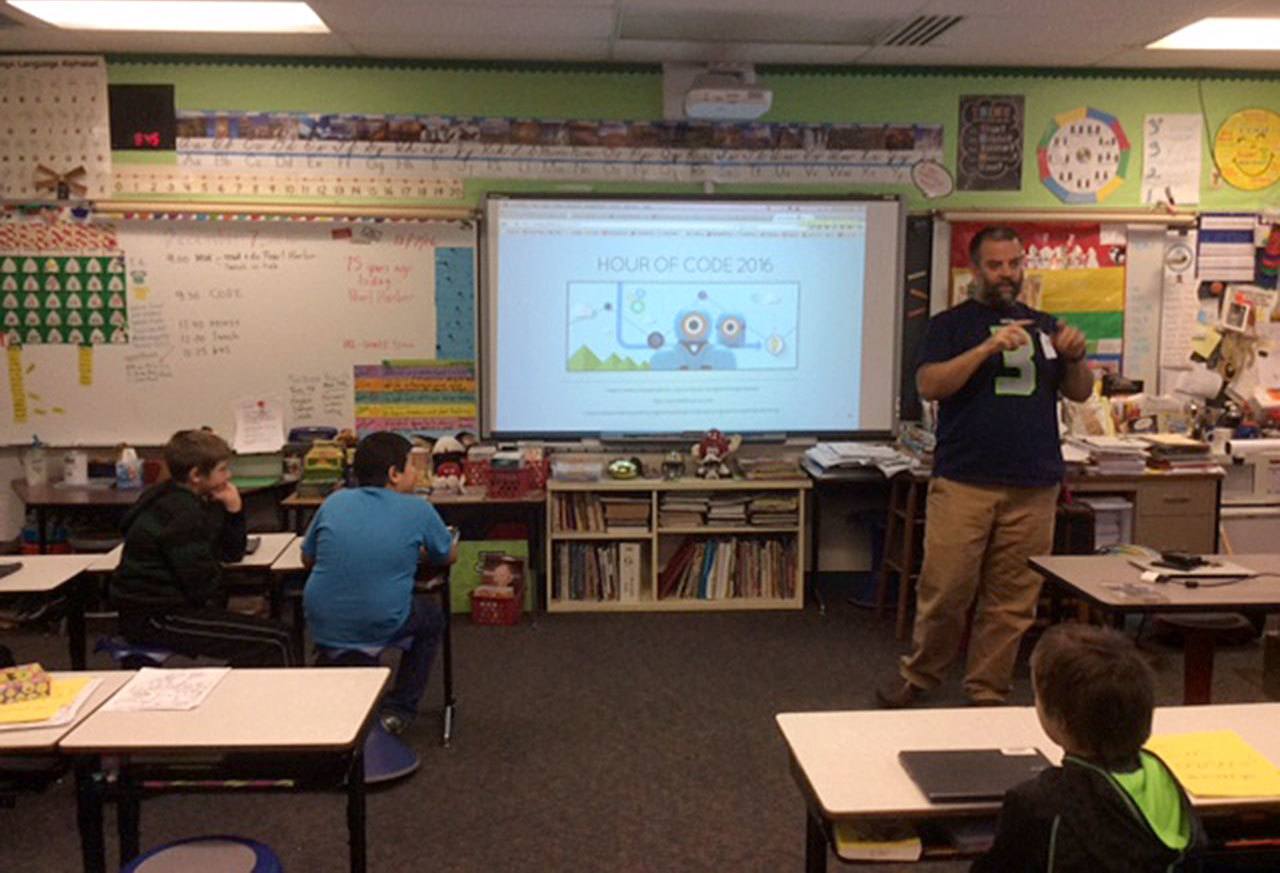Fifty percent of Washington’s schools are expected to meet new computer science standards by 2019, after being formally adopted by Superintendent of Public Instruction Randy Dorn last week.
The South Whidbey School District could reach the standards even sooner than its counterparts. The standards outline computer literacy goals for elementary and middle school students and specifies levels of proficiency for high school students. The learning standards also build from grade to grade, meaning fourth grade standards cannot be learned until after third grade standards are mastered.
Through the course of their K-12 education, students are expected to understand the difference between a tablet and desktop computer by second grade, how different file formats represent trade-offs on quality and file size, and how issues affect the speed of computer networks.
Students from the elementary school level and up have participated in a course called “Hour of Code,” which serves as an introduction to computer programming and was held during Computer Science Education Week from Dec. 5-11. One such session on Dec. 7 had students in Rachel Kizer’s elementary school class learn how to build snowpersons with JavaScript, a programming tool that can be used to create interactive effects within web browers. The course was taught by Aaron Racicot.
“I took advantage of it to have one of my class parents come in and teach the kids about coding for a living,” Kizer said in an email. “We don’t even know what skills and jobs these kids will be doing, but we have to expose them to the future. The Hour of Code is a jumping off point for educators.”
Kizer said that in addition to coding work, students in grades 2-5 use Google Chromebooks daily for reading and writing as well as research.
Superintendent Jo Moccia said there are more and more opportunities for students to get jobs after graduation that require competency in science, technology, math and engineering.
“I think what we’re looking toward is the idea that we’re going to get graduates ready for the kinds of jobs that will be available to them,” Moccia said.
Jeff Greene, a high school technology teacher, said that in addition to 100 percent of his students participating in the “Hour of Code,” his intro engineering class has a rigorous, two-week section dedicated to programming.
“It has a final where the students create a program that others can play,” Greene said.
He also mentors an independent class for senior programmers, which teaches full programming with specific languages that the students chooses, including JavaScript, HTML, Ruby, C# and Python. The high school does not, however, currently teach a full computer science class that would fulfill a computer science, math, or science graduation credit.
“We are just too small of a school to offer this type of class,” Greene said. “But, again, the independent class could give a student four years of self-taught or online curriculum study.”


